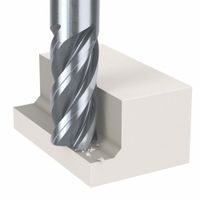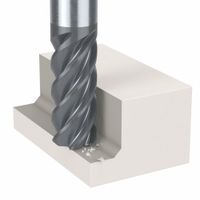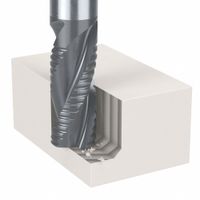Corner-chamfer end mills are cutting tools used in milling applications to create beveled edges or chamfers on workpieces. They come in various sizes and specifications to suit different machining needs. Common sizes for corner-chamfer end mills typically range from 1/8 inch to 1 inch in diameter, though larger sizes are available for industrial applications.
The specifications of corner-chamfer end mills include:
1. **Diameter**: The cutting diameter can vary, with common sizes being 1/8", 1/4", 3/8", 1/2", 5/8", 3/4", and 1".
2. **Length of Cut**: This refers to the length of the cutting edge. It can range from a few millimeters to several inches, depending on the tool's application.
3. **Overall Length**: The total length of the end mill, which includes the shank and the cutting portion. This can vary widely based on the tool's design and intended use.
4. **Shank Diameter**: Typically matches the cutting diameter for smaller tools, but can be larger for added strength in larger tools.
5. **Flute Count**: Commonly available with 2, 3, 4, or more flutes. More flutes generally provide a smoother finish but may require slower feed rates.
6. **Helix Angle**: The angle of the flutes relative to the tool's axis, usually between 30° and 45°, affecting chip evacuation and cutting efficiency.
7. **Corner Radius**: The size of the chamfer or radius at the tool's corner, which can range from 0.010" to 0.125" or more, depending on the desired edge finish.
8. **Material**: Typically made from high-speed steel (HSS), carbide, or cobalt, with coatings like TiN, TiCN, or AlTiN for enhanced performance and longevity.
These specifications allow corner-chamfer end mills to be tailored for specific materials and machining conditions, providing versatility in manufacturing processes.




